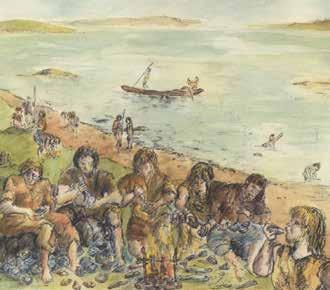
3 minute read
Prehistoric Carlingford Lough
After the Ice Age
The last Ice Age ended about 15,000 years ago and a warmer climate resulted in the melting of the vast ice sheets and the colonisation of land by plants and animals. The melting ice caused a rise in sea levels and by 9,000 years ago, Ireland had become separated from Britain by the Irish Sea.
Advertisement
Early settlers
The first humans to come to Ireland arrived from northern Britain during the Mesolithic period. Arriving in skin boats, they may have landed on the south Down or north Leinster coast, and spread from there to other parts of Ireland. These early settlers, known as “hunter-gatherers”, lived in coastal areas and survived on fish, shellfish and sea birds. Coastal areas also provided sources of flint from which they made simple tools. In the summer and autumn they migrated farther inland along river valleys to catch salmon and gather wild berries and nuts.
Reconstruction drawing of Mesolithic people gathering and eating oysters on the shoreline
© Northern Ireland Environment Agency Separation from Britain meant that Ireland did not have a wide range of vegetation and wildlife making it a poorer country for the first human settlers. This situation created a greater reliance on the sea and rivers for food. The Neolithic people were the next settlers in the Carlingford Lough region (approximately 6,000 years ago). These new settlers were the first farmers and lived in settled communities keeping domestic animals including cattle, sheep and pigs. Hunting was still important and the sea and rivers were significant sources of food. Pottery began to be produced and tools and weapons made from flint were traded throughout Ireland and abroad via boats. Due to the heavily wooded landscape, transport by water was essential.
Coastal settlement and interaction with the sea were important during the Bronze and Iron Ages. These periods saw the development of longer sea voyages and trading routes. Navigation was achieved using landmarks such as cliffs, mountains and headlands, and when voyages were made at night, by the moon and the stars. By the Iron Age, trading routes were developing between Ireland, Europe and the Mediterranean.
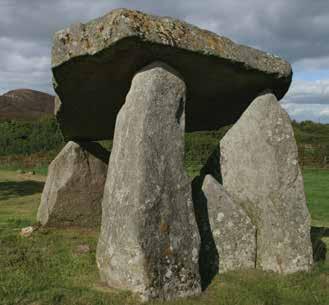
Ballykeel Dolmen, south Armagh
© Newry and Mourne Museum (photograph by Christina Joyce) The most famous evidence of Neolithic settlement are megalithic tombs. There are a number of these burial places in the Carlingford Lough region. Some of these command good views of the sea, leading some archaeologists to believe that coastal areas were important in the religious beliefs of Neolithic people.
Classroom Activities
1. Flint was used to make hunting implements and tools. Small pieces of worked flint were used to skin the hides of animals and prepare foodstuffs. Worked flints are found on archaeological sites, often in conjunction with animal bones which indicates previous human activity. You do not have to be an archaeologist to find these tools, they can often be found by walking over ploughed fields. Using Photocard 1 explore how these flints were made, how they compare to modern tools and what archaeology tells us about people in the past.
2. Look at Photocard 2 which illustrates foodstuffs eaten by prehistoric people.
Explore how these types of food would have been caught, collected, stored and prepared for eating. Blackberries and oysters would have been eaten raw, while other fish and animals such as eels and hares would have been cooked. In the Carlingford Lough area, middens of shells have been found, showing that shellfish were an important part of the diet of early man.
3. Boats were made from different materials in the Neolithic, Bronze Age and Iron Age. Look at the drawings of the boats and explore with the class what these boats were made from, how they were powered and how they were used.
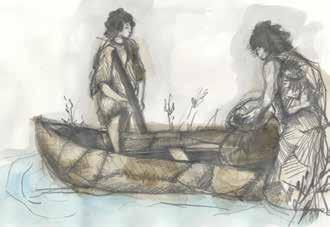
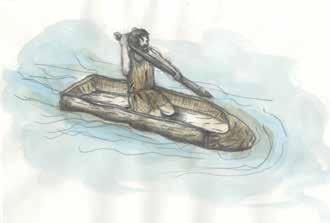
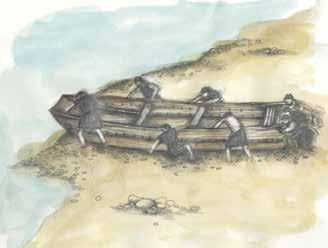
Reconstruction drawings of boats
© Newry and Mourne Museum (artwork by Anna Savage) These drawings illustrate some of the boats that were used in prehistoric Ireland. They include boats made from animal skin, dugout canoes and plank boats.







